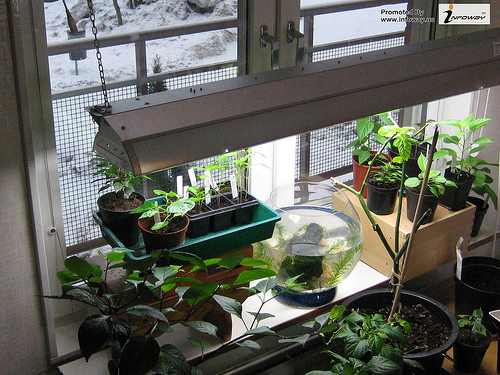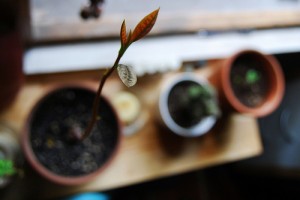
Image source
There’s something special about being able to grow a garden. Home grown vegetables are fresh and full of flavor, and the greenery and flowers add life and color to your home. Unfortunately for those stuck in apartments or places in the city, it’s not possible to stake out a large garden plot. However, that doesn’t mean that you can’t garden. There are lots of creative ways to use the little space you have to grow herbs, flowers and even vegetables for food storage if you so desire.
Window Boxes
It’s fairly easy to find a place for a window box. Either hang it outside a window or perhaps on the railing of a porch. A two-foot-wide window box can hold four to six large herbs or a small amount of salad greens. Since these boxes are generally in a visible area, select plants with a variety of shapes and colors to provide an interest and attractiveness to the mini garden. Throwing a couple edible flowers into the mix is a great option for a pop of color, and will make your salads and soups extra fancy. You might also want do some research to find some of the easier vegetables to grow at home and plan your garden around that.
Creating a theme for each box is another fun arrangement. A box of Asian herbs could include garlic chives, Thai basil and lemongrass while a box of Italian herbs could include rosemary, basil and oregano. A quick note: When planting herbs, avoid over fertilizing them, /as it causes them to become less flavorful.
Garden Pots
 If you have a porch or patio area that gets sufficient sunlight, growing a diverse garden in pots is a perfect option. Select vegetables that you like the most and that go well together, such as peppers and onions for homemade salsa.
If you have a porch or patio area that gets sufficient sunlight, growing a diverse garden in pots is a perfect option. Select vegetables that you like the most and that go well together, such as peppers and onions for homemade salsa.
If you are growing large plants like beans and tomatoes, they require large pots at least two feet in diameter, but smaller pots will work for things like peppers or greens. Be sure to stake your tomato plants, so they grow tall and yield a better crop. Growing plants up also provides additional space in planters to grow small plants like carrots underneath. Don’t be afraid to plant a variety of the same species together or to look for dwarf breeds that fit better in a pot.
Use Landscaping
If you don’t have a lawn but do have small areas for shrubbery or flowers, consider planting herbs and vegetables in that area instead. Transform these small spaces into an herb garden by using a large rosemary plant combined with a smaller sage plant. Fill in the rest of the space with oregano, thyme and parsley for some contrast. A small salad garden is another option. Combine a small tomato plant with some bell peppers and a couple varieties of lettuce or perhaps spinach for a colorful salad to go with dinner.
Vertical Gardens
If you have an outside wall to attach it to, a vertical garden gives more space than a window box, making room for a mix of herbs, greens and small vegetables. People have constructed their own out of old pallets or rain gutters. Just make sure the material you use doesn’t contain any toxins and allows for drainage.